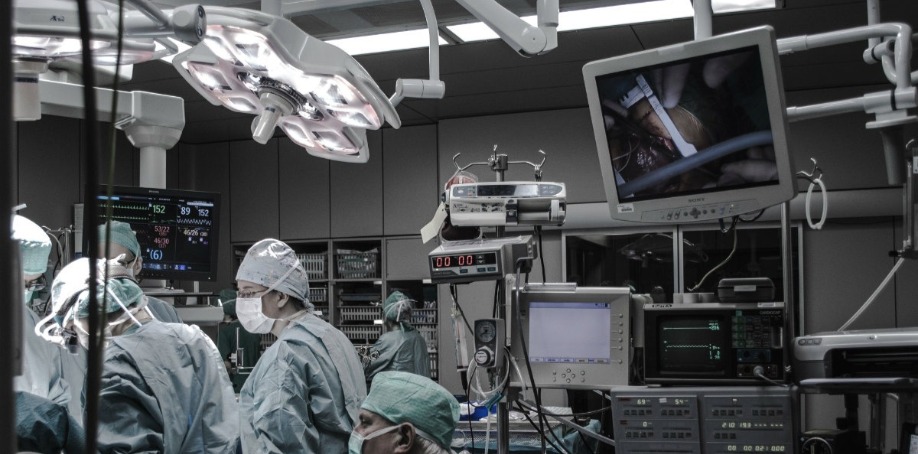
The IP Flash Caster is Arista's effort to transform the AV industry. Offering 4K broadcast-quality images, zero-latency streaming and high-quality audio, the award-winning signal distributor could be like the perfect AV solution for just about any situation.
But what exactly does a Flash Caster offer, and how can it be implemented?
What Are Flash Casters?
Arista's IP Flash Caster offers 4K AV over IP streaming with zero latency. In doing so, it seeks to provide a single cost-effective and scalable AV signal processing and distribution unit.
Because the Flash Caster combines video, audio and ethernet control on a single cable, it offers AV installers and event professionals the perfect solution for a quick AV setup, rAVe Publications founder Gary Kayye writes. Not only that, but it also brings a wealth of features, he continues. Video-wise, for instance, the Flash Caster offers broadcast-quality and adaptive scaling with true seamless switching.
There are a number of things that the Flash Caster is ideal for, Anthony Vargas at Sounds & Communications writes. This includes “AV and KVM signal extension, IP-based switching, videowall and multi-view tasks.” Multi-view tasks are achieved thanks to multi-source video compositing, which enables each individual receiver to automatically split incoming video and render only a part of the image. The Flash Caster also comes with configurable bezel correction support that allows pixels to be hidden if they are obscured by the display bezel, Vargas notes.
Scalability is a crucial feature of Arista's Flash Caster. AV Network's Jeremy J. Glowacki writes that the Flash Caster “enables the connection of as many encoders and decoders as a network design requires, with the ability to scale up further as requirements evolve.” There are a variety of endpoint device configurations, too, so AV installers can equip a single endpoint device or go as large as a 16-blade rackmount unit.

4 Use Cases to Inspire Integrators
The Flash Caster can be used in virtually any scenario where HD images or zero-latency streaming are essential. The following offer just a taste of what can be achieved with the Flash Caster.
1. Live Sports
With the wealth of viewing options now available and advances in home theatre systems, providing an exceptional live AV experience for sports fans is essential.
This is one of the main requests that AVIXA's Brad Grimes hears time and time again from venue operators. It's not just the in-home experience that sports venues have to compete with, however. “Today's fans encounter AV wherever they go,” Grimes says. “It starts with the smartphones in their hands and exists all around them — in shopping malls, restaurants, public spaces. So customer expectations are high and venues want to deliver a digital fan experience that meets those expectations.”
One way to meet those expectations is with an AV system that allows for broadcast-quality 4K images and multi-view displays. This ensures that fans are able to see the action unfolding from every angle, no matter where they are located in the stadium.
Michael Crisci, business development manager at Atlona, agrees that AV over IP can be perfect for the in-stadium fan experience. “The native virtual matrix features of multicast IP solutions allows the sharing of any amount of source content to any number of displays,” he says. “Therefore, it is possible to tailor the event content to specific zones in the facility.”
Low-latency broadcasters are key here, says Crisci. This allows stadiums to distribute the game to every corner of the venue without delay. That way, even fans ordering food at the concession stand see the action at the same time as the fans in the stands.
Even sports bars could leverage Flash Casters to level-up their AV experiences. Harman's S. Kyle Davis notes that a networked AV solution would allow bar owners to pull and display images from a huge number of sources (e.g. live broadcasts and archived media files) and deploy them across different screens throughout the bar.
2. Corporate Events and Conferences
Poor image and audio quality are two of the most common AV mistakes event organizers make, says Azavista. There are few things worse than letterboxed displays because there isn't aspect ratio continuity.
Poor audio quality can likewise tax event attendees. Azavista notes that “sound can affect our audience on a very personal (and subconscious) level. It is very exhausting to spend an hour, straining to listen to a speaker due to poor sound quality and often, the audience will not recall much of the presentation after that.”
Hawthorn's David Barton says this is why the use of 4K technology is on the rise, as event organizers demand more and more from their content. More often than not, this 4K content isn't limited to one screen, either. Event organizers want 4K content delivered to multiple screens or have multiple images on a single screen.
Arista's Flash Caster is the perfect way to deliver 4K-quality images to several screens at a venue and control the content in real time. That's why Jono Pratt, head of video at AV Events, relies on the Flash Caster to deliver exceptional AV experiences at the events his company create.
Pratt notes that it was crucial to the success of a corporate event and awards dinner for Lion, a New Zealand food and beverage company. The Flash Caster was used to deliver uncompressed 4K video signals from a control hub to screens in front of the audience. Though the event had several screens at the front and back of events, the Flash Caster allowed for everything to be run from a single cable. This was a “tremendous help,” Pratt says.

3. Healthcare
The Flash Caster isn't just suitable for putting on great shows. It also offers potentially life-saving benefits to the healthcare industry because it delivers the kind of instant, uncompressed 4K images that healthcare professionals need.
Arista's Flash Caster offers the perfect AV solution to create the integrated operating room — like the one described by Healthcare Design Magazine. For an integrated operating room to be effective, the magazine says, “data network, and remote audio-visual technology must be designed as related parts within a wider, integrated whole. Design and specification must occur in a coordinated manner to address issues of resolution compatibility, signal transmission compatibility, network configuration, bandwidth availability, reliability, and information security.” The Flash Caster takes care of all of this.
These kinds of AV setups in healthcare will only become more popular alongside the rise in non-invasive surgeries. Bob Michaels, president and CEO at ZeeVee Inc., notes that the ability to deliver 4K images with “unprecedented clarity and color depth” allows surgeons to see and navigate better during these kinds of procedures. Because the Flash Caster allows for multi-view images, archived footage from previous operations can be viewed on screen at the same time.
Pro AV Magazine's Tom Zind agrees that demand in the healthcare sector is huge for these kinds of clear and easily digestible images. Displays able to show several high-definition images at once from medical devices, radiology, medical records and other sources are particularly popular. These kinds of visual displays are already used in many hospitals and are quickly displacing traditional ways of delivering visuals in the operating room.
4. Concerts
Concert designers used to focus much more on the A in AV, but not anymore. The visual aspect of concerts is now as important as the audio experience. What's more, attendees now expect screens at concerts, says Videonations. “They expect screens to be dynamic, high definition, and to feel engaged from wherever they are.”
Rolling Stone's Amy X. Wang says huge screens are now all the rage at concerts thanks to U2. Just a few years ago, the Irish band blew concert-goers away with the largest screen ever, which was used as a backdrop to their performance. It was revolutionary then, but now that kind of screen is everywhere.
Not only are concert screens bigger than ever before, but now more sources need to be incorporated into a production, says Lightware's Felix Knight. Multiple cameras, live streams and pre-recorded material all put a burden on signal routing and switching, Knight notes.
This makes 4K AV over IP solutions like the Flash Caster a natural choice. By providing uncompressed 4K images at broadcast quality, the system ensures the highest picture quality possible. Multi-image functionality allows for several sources to be displayed on a single display at once. And low latency means that event organizers can control streams instantly while providing real-time footage throughout the venue.
Think the Flash Caster could be the perfect AV solution for your next event? Learn more about our award-winning product today.
Images by: Hoach Le Dinh, Joshua Peacock, Piron Guillaume


